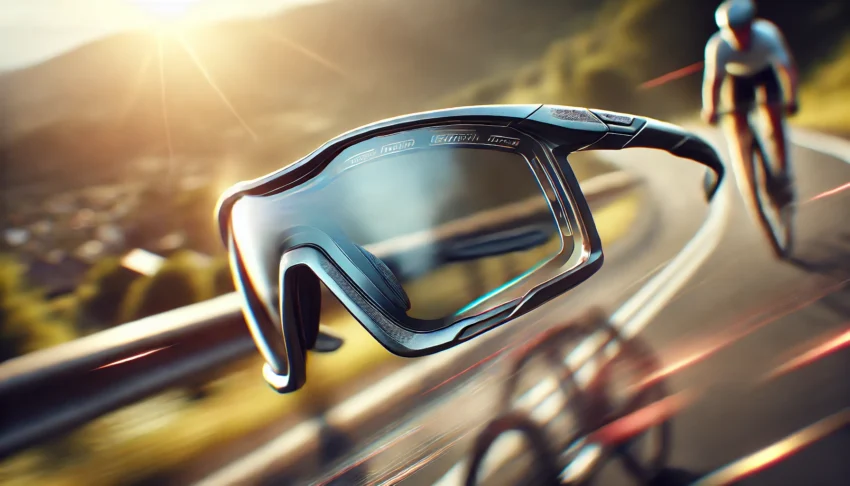When it comes to athletic performance, every detail counts. From the shoes on your feet to the glasses on your face, the right gear can make all the difference. Sport glasses are a critical yet often overlooked piece of equipment that can enhance your performance, protect your eyes, and even prevent injuries. Whether you’re a casual runner or a professional cyclist, the right pair of can help you see clearly and stay focused.
Types of Sport Glasses
Sport glasses are available in various designs and functions, tailored to meet the unique demands of different sports and athletic activities.
Prescription Sport Glasses
For athletes with vision impairments, prescription sport glasses are a game-changer. These glasses are customized to match your exact vision requirements, ensuring you don’t have to compromise between seeing clearly and staying safe on the field. These glasses are available in various designs, from wraparound styles that provide maximum coverage to more minimalist frames that prioritize comfort.
Non-Prescription Sport Glasses
Even if you don’t need corrective lenses, non-prescription sport glasses can still offer significant benefits. These glasses are primarily focused on protection, shielding your eyes from debris, wind, and harmful UV rays. Many athletes also opt for these with specialized lenses that enhance contrast, helping them better distinguish between objects during high-speed activities.
Polarized Sport Glasses
Polarized lenses are particularly popular among athletes who spend a lot of time outdoors. These lenses reduce glare from reflective surfaces like water, snow, and pavement, making them ideal for sports like cycling, skiing, and fishing. By enhancing visual clarity and reducing eye strain, polarized sport glasses allow you to stay focused on your performance without being distracted by bright light.
Transition Lenses in Sport Glasses
Photochromic lenses, commonly referred to as transition lenses, change their tint automatically in response to varying light conditions. This feature is incredibly useful for athletes who move between different environments, such as a cyclist transitioning from a sunny road to a shaded forest path. Transition lenses eliminate the need to switch between different pairs of glasses, offering convenience by adapting to changing light.
Key Features to Look for in Sport Glasses
Choosing the right sport glasses involves more than just picking a pair that looks good. There are several key features you should consider to ensure your glasses meet your performance needs.
Durability and Impact Resistance
Sport glasses need to be tough enough to withstand the rigors of athletic activities. Look for glasses made from high-impact materials like polycarbonate or Trivex, which are not only durable but also lightweight. These materials can absorb impact without shattering, protecting your eyes from potential injuries.
UV Protection
Prolonged exposure to ultraviolet (UV) rays from the sun can severely harm your eyes, potentially leading to cataracts and other vision issues. Sport glasses with 100% UV protection are essential for outdoor athletes. This feature ensures that your eyes are shielded from both UVA and UVB rays, keeping them healthy and reducing the risk of long-term damage.
Comfort and Fit
A good fit is crucial for sport glasses, as they need to stay in place during intense activity. Consider features such as adjustable nose pads and temple arms, which enable you to tailor the fit of your glasses for added comfort. A secure, comfortable fit not only enhances your performance but also prevents the glasses from slipping or causing discomfort during prolonged wear.
Anti-Fog and Ventilation
Fogged-up lenses can be a significant distraction and even a hazard during sports. Many sport glasses come with anti-fog coatings or built-in ventilation systems that help keep your lenses clear, even during high-intensity activities. This feature is particularly important in colder climates or during sports that involve heavy sweating.
Lens Technology
Modern sport glasses often feature advanced lens technologies that enhance vision and protect your eyes. HD optics provide sharper, clearer images, while polarized lenses reduce glare. Mirrored lenses can also be beneficial in bright conditions, as they reflect light away from your eyes, further reducing glare and eye strain.
Popular Sports That Require Specialized Glasses
Different sports have different demands, and your choice of sport glasses should reflect the specific needs of your activity.
Cycling
Cyclists require sport glasses that offer aerodynamic efficiency and wide-angle vision. The wraparound design is popular in cycling, as it provides full coverage, protecting your eyes from wind, dust, and insects. Additionally, lenses that enhance contrast can help cyclists better navigate varied terrains.
Running
For runners, lightweight sport glasses with a snug fit are essential. Look for designs that are sweat-resistant and offer ventilation to prevent fogging. Some running glasses also feature lenses that enhance depth perception, which can be particularly helpful in uneven or trail running environments.
Water Sports
Water sports like surfing, kayaking, and fishing require glasses with hydrophobic coatings that repel water and prevent the lenses from becoming obscured. Sealed frames are also important to keep water out and maintain clear vision even in wet conditions.
Winter Sports
Winter sports such as skiing and snowboarding demand glasses that reduce glare from the snow and provide protection against harsh weather conditions. Lenses with anti-fog coatings and ventilation are crucial, as are designs that fit comfortably with helmets and other protective gear.
Ball Sports (Tennis, Basketball, etc.)
In sports like tennis and basketball, where fast movements and quick reactions are key, sport glasses need to offer shatterproof lenses and a secure fit. These glasses protect your eyes from sudden impacts while ensuring you can track the ball and other players with ease.
How to Choose the Right Sport Glasses
Selecting the right pair of sport glasses involves considering both your personal needs and the specific requirements of your sport.
Assessing Your Sport’s Specific Needs
Think about the environmental conditions you’ll face during your sport—whether it’s bright sunlight, water, or fast-paced action—and choose glasses that cater to these challenges. For instance, a cyclist might prioritize aerodynamic design and wide-angle lenses, while a skier might focus on anti-glare and anti-fog features.
Matching Glasses to Your Face Shape
Similar to everyday eyewear, sport glasses should be chosen to complement your face shape, ensuring both comfort and visual appeal. For example, those with a round face might prefer rectangular frames that add definition, while individuals with a more angular face might opt for rounder frames.
Trying Before Buying
Whenever possible, try on sport glasses before purchasing to ensure they fit well and feel comfortable. Pay attention to how they sit on your nose and ears, and whether they stay in place when you move your head quickly. A good fit will prevent distractions during your sport.
Maintenance Tips for Longevity
To get the most out of your sport glasses, it’s important to take care of them properly. Regularly clean the lenses with a microfiber cloth, steer clear of harsh chemicals, and keep them stored in a protective case when not in use. Regular maintenance will help extend the life of your glasses and keep them performing at their best.
The Evolution of Sport Glasses
Sport glasses have significantly evolved since their early days, thanks to breakthroughs in technology and materials.
Early Designs and Their Limitations
The earliest sport glasses were often bulky and uncomfortable, offering limited protection and vision enhancement. These designs were primarily focused on basic eye protection, without much consideration for comfort or performance.
Advances in Material Science
The introduction of materials like polycarbonate and Trivex revolutionized sport glasses, making them lighter, stronger, and more comfortable. These materials also allowed for the development of more advanced lens technologies, such as polarization and anti-fog coatings.
Modern Innovations in Sport Eyewear
Today, sport glasses incorporate cutting-edge technologies like photochromic lenses, HD optics, and even smart features like heads-up displays. These innovations have made sport glasses an indispensable tool for athletes looking to optimize their performance and protect their vision.
Leading Brands in Sport Glasses
Several brands have become synonymous with high-quality sport glasses, offering a range of products to suit different sports and preferences.
Oakley
Oakley is a leading name in sport eyewear, known for its innovative lens technologies and stylish designs. Their sport glasses are popular among athletes for their durability, comfort, and performance-enhancing features.
Nike Vision
Nike Vision offers sport glasses that combine sleek design with advanced optics. Their products are tailored for athletes who demand both style and functionality, with options for various sports.
Smith Optics
Smith Optics specializes in high-performance sport glasses, particularly for outdoor and adventure sports. Their lenses are known for exceptional clarity and protection, making them a favorite among skiers, cyclists, and water sports enthusiasts.
Under Armour
Under Armour’s sport glasses are designed with athletes in mind, offering lightweight frames, polarized lenses, and a range of styles to suit different sports. They are known for their durability and comfortable fit.
Rudy Project
Rudy Project is a brand that focuses on creating sport glasses with cutting-edge technology and customizable options. Their glasses are favored by professional athletes and are known for their precision and high-performance features.
Conclusion
Choosing the right sport glasses is more than just a matter of style—it’s about enhancing your performance and protecting your eyes in the process. Whether you’re cycling down a mountain, running a marathon, or playing a fast-paced game of tennis, the right pair can make all the difference. Invest in quality eyewear that suits your specific needs, and you’ll not only see better but perform better too.
FAQs
What Are the Benefits of Polarized Lenses in Sport Glasses?
Polarized lenses reduce glare from reflective surfaces like water and snow, enhancing visual clarity and reducing eye strain during outdoor sports.
How Do I Clean and Maintain My Sport Glasses?
Use a microfiber cloth to clean the lenses, avoid harsh chemicals, and store the glasses in a protective case to prevent scratches and damage.
Can I Get Prescription Sport Glasses?
Yes, many brands offer prescription sport glasses that are tailored to your vision needs, ensuring you can see clearly while staying protected.
Are Sport Glasses Suitable for Everyday Wear?
While sport glasses are designed for athletic activities, many styles are versatile enough for everyday wear, especially those with transition lenses.
What Is the Average Lifespan of a Pair of Sport Glasses?
With proper care, a quality pair of sport glasses can last several years, though this can vary depending on the frequency of use and the conditions they’re exposed to.

